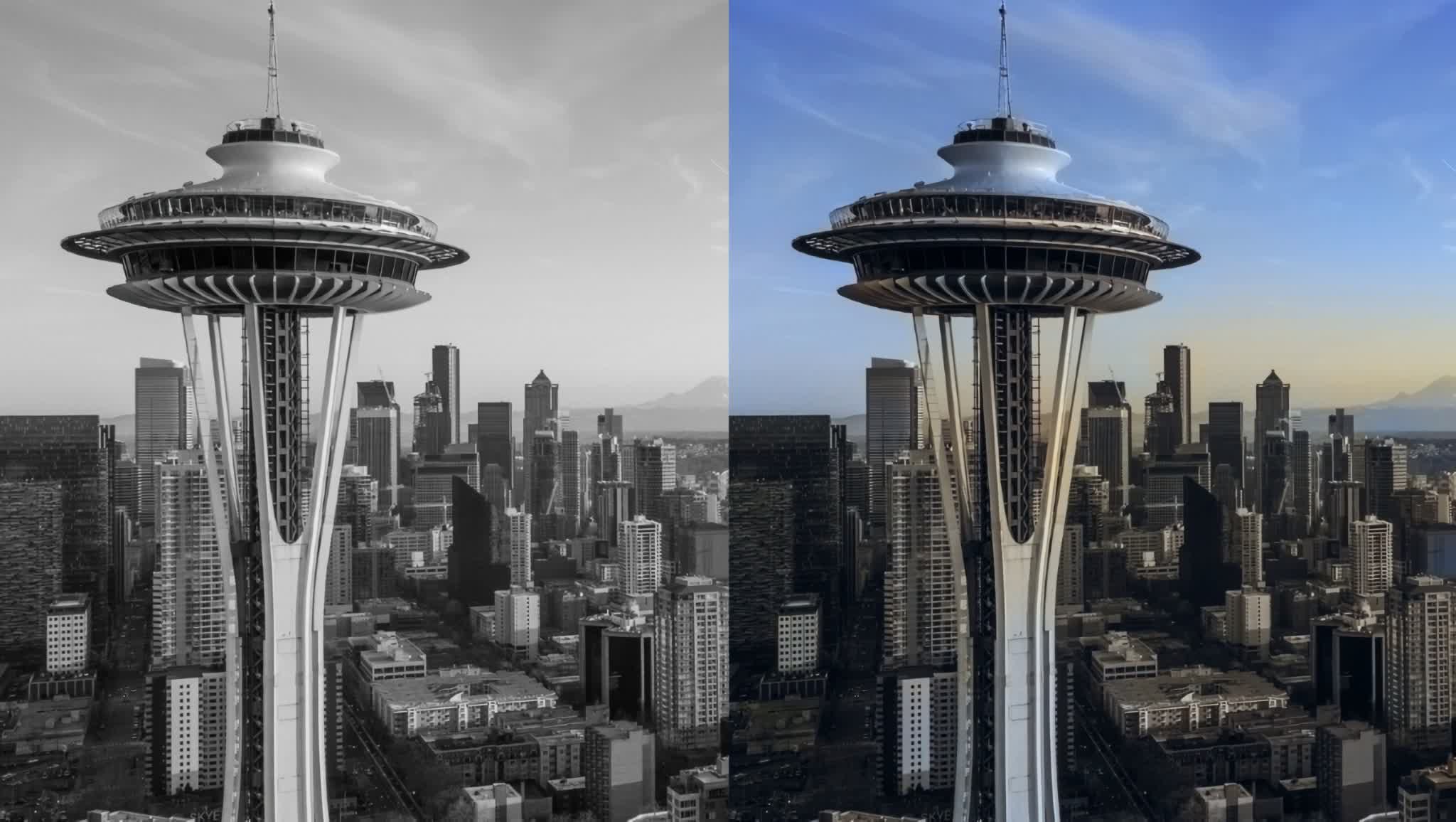In a nutshell: Adobe pushed out a big update for Photoshop users today. It mostly focused on AI editing tools, including sky replacement, a "Discover" panel, advanced AI edge selection, and a very cool feature called Neural Filters.

Adobe released the newest version of Photoshop on Tuesday with some interesting new features powered by its Sensei AI platform. Arguably the most interesting of these is what it calls "Neural Filters."
"Neural Filters is a major breakthrough in AI-powered creativity and the beginning of a complete reimagination of filters and image manipulation inside Photoshop," notes Adobe in its blog.
Some of the filters are still in beta, but the developers wanted to get them out in this release to have average users try them out and provide feedback.

The image on the left is the original. On the right, neural filters changed the direction the subject is looking and his facial expression.
Neural Filters are a completely new workspace that allows users to apply effects with just a few clicks or adjustments to some sliders. Several types of included overlays can, for example, make your image look like pop-art or give it a van Gogh-like feel.
More interesting are the AI-powered sliders that can alter a subject's appearance. Users can easily tweak facial expressions with sliders labeled with emotions like "anger." Move the anger slider to the right, and the filter automatically adjusts the subject's face to look angrier, likewise for "Joy," "Surprise," and so forth. Other sliders allow users to change the direction the subject is looking or even the lighting's orientation.
Other more practical applications are possible as well, including removing eyeglasses, smoothing skin, and removing JPEG compression artifacts, among other things. There is even the ability to transfer makeup from one subject to another or realistically colorize a black and white photo. Adobe's Neural Filter demo video above gives you an idea of what kind of results to expect.
Neural Filters are "non-destructive," meaning users can reverse changes at any time. Adobe says that the new tools may not necessarily produce the results some users might be looking for, but Photoshop's AI improvements have sped up workflows. Users can now be more experimental in the time they have without ruining their projects. They are also not restricted to using the filters only in the smart-filter workspace. The effects can be applied directly to existing layers or can become a stand-alone layer.
Adobe has included eight neural filters with this release—Skin Smoothing, Style Transfer, and six other "beta" filters. It also mentioned that it is including new feedback tools to make it easy for users to respond with comments on whether they find the new filters useful or to report any bugs.
Check out Adobe's blog for the rest of the changes.